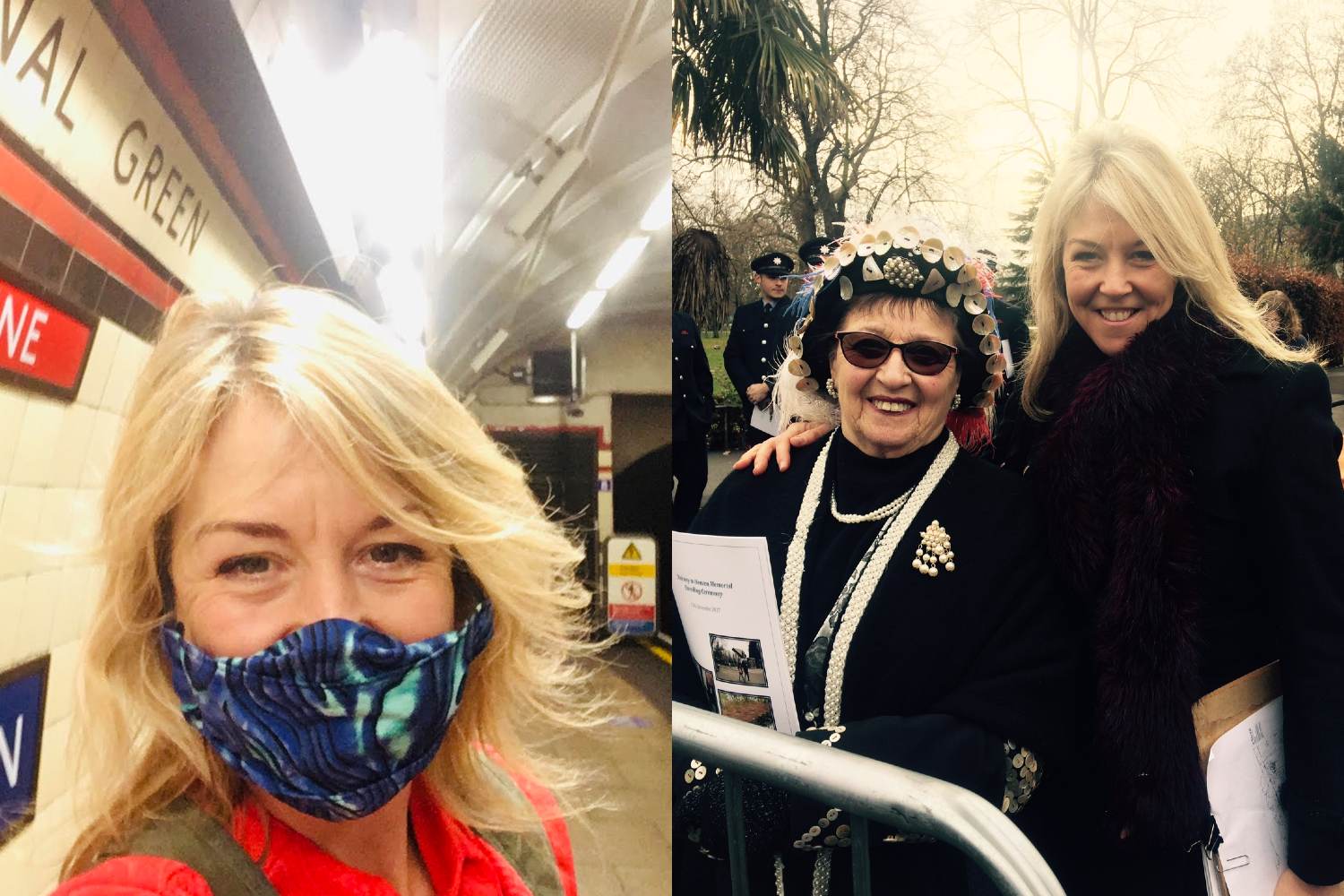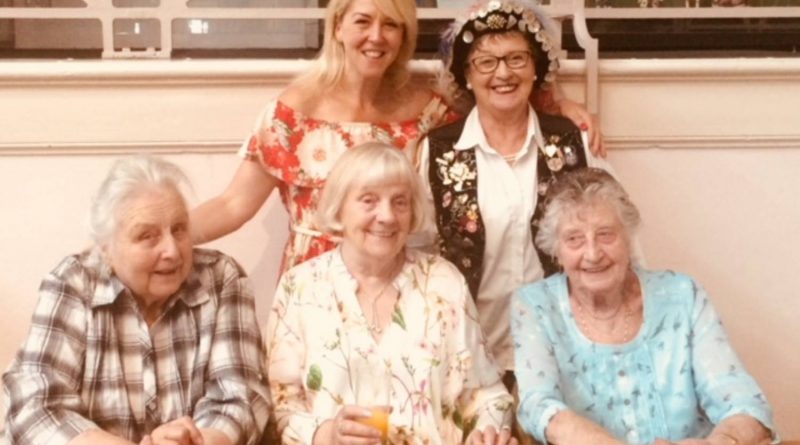Kate Thompson on capturing the stories of the East End’s women
We speak to author Kate Thompson about the importance of libraries, how the pain of World War Two shaped our area, and ways in which the women of the East End provide endless inspiration for her writing.
Kate Thompson worked as a journalist for twenty years, before moving into writing novels as well as non-fiction. She is now a Sunday Times bestselling historical fiction and non-fiction author.
All of Kate’s books put East End social history, and particularly women’s history, at their forefront. She spends months researching by chatting to women in their nineties and trawling local archives before she even sits down to write.
We asked Kate Thompson six questions, covering everything from how the unresolved trauma of WW2 has shaped the East End to what she makes of the term “chick lit”. She also chats about Bethnal Green’s secret library, which is the topic for her next novel ‘The Little Wartime Library’, due to be published in Spring 2022.
1. Why do you keep returning to the East End in your books? What is it about the area that makes it so fruitful to write about?
‘The best answer to that is the women. Their spirit, pride, irreverence, subversiveness, coupled with their phenomenal work ethic and their kindness have grown into all the spaces of my heart. I heard this once and it’s true; East End women are tough, but in the end, they value kindness above all. Doreen Golding, the Pearly Queen of Old Kent Road and Bow Bells once described her mother-in-law, Netty from Whitechapel, as being ‘a warrior in a wrap over apron’ and I think I understand what she means.
As long as I live I’ll never hear all the richness and complexities of those stories, but I’ll keep on listening while I can. Sadly so many of the women I admire – Minksy, Dot, Jessie, Emily, Trish and more have died, sharpening my realisation that the window of opportunity to capture these unique stories of a life pre-welfare state is narrowing every day. When I attended the funeral of Emily from Cyprus Street, Bethnal Green, who I featured in the Stepney Doorstep Society, her nephew told me, ‘every time an older person dies, it’s like a library burns down’.
I set my books in wartime East London, and I’ll never be able to tread those bomb-shattered streets, but thanks to the women I’ve met, I can imagine them. It helps that the women of Bethnal Green and beyond are gifted storytellers and naturally garrulous.
‘My mum’s the only person who can go on holiday and come back with a sunburnt tongue,’ one bloke joked with me once. ‘
2. Your books also often feature the East End during the second world war- how do you think that the war shaped the area?
‘I think the instinctive answer feels to say it made people more resilient. But I would question that ‘keep calm and carry on’ rhetoric because I think the people of the East End were pretty weathered and battle-weary before the war even began. I don’t think that stoicism was born in the Blitz, I think that’s been bred in the bone after centuries of overcoming desperate poverty and striving to not only make ends meet, but better yourself.
Where I feel it impacted people the most is through unresolved trauma. So many people in the East End suffered unimaginable hardship and horror on the Homefront. The deaths of 173 people crushed to death on the steps down to Bethnal Green Tube in March 1943 in an avoidable accident. The six hundred people buried alive in a school in Canning Town when a bomb struck while they were waiting for transport out. And countless other unknown personal tragedies. Back then there was no acknowledgement of what we now call post-traumatic stress or counselling, no blame or compensation culture. By and large, people were left to cope alone and there was no alternative but to ‘get on with it’.
Their grief was sacrificed in the name of morale. And so a lot of emotion and pain was internalised. I don’t think that pain fades, it festers. I’ve spoken to a great many people who are still suffering all these years on.
However, I do feel we are approaching a time where the need to share, overcomes the desire to forget. I sense that very strongly in the men and women I interview.’
3. You do a great deal of research for your historical novels, tell us how you go about carrying that out.
‘I’d like to say I have a thought-out strategy, but I don’t! Generally, I try to encompass most of these points.
First of all, I’d said devour all sources you can. Research is often like a giant jigsaw puzzle and it’s a case of slotting together the pieces to get as full a picture as possible.
I interview as many men and women who have memories of the times I’m setting my books in, as possible, for example when it came to Secrets of the Lavender Girls, set at the Yardley factory in Stratford, I interviewed as many former workers as I could, travelling to Stratford, Canvey Island and Suffolk to do so.
I find that local history groups, as well as libraries and archives, are invaluable. Local History Library and Archives in Bancroft Road in Mile End is a goldmine and the staff are so knowledgeable.
Back copies of the East London Advertiser give you a fascinating insight into the time period. What was on at the pictures, what jobs were being advertised, who was getting married, what criminal cases were going through court, all inform a bigger and richer picture of your story and are a wonderful way of adding colour and weaving together true stories into the plot.
I also use Facebook and social media. There so many sites set up devoted to memories and history, that’s how I got in touch with Lavender Girls who used to work at the old Yardley factory to interview, they are amazingly useful.
I would also advise you to make a librarian your best friend! They know everybody in the community after all and it’s their job to dispense information. Over the years, so many librarians have suggested people for me to interview. It’s a rewarding relationship because then you can return to the library when the book has come out to talk about it.
Finally, I’d say be patient, be prepared to put in the hours and don’t expect it to be a 9-5 job, I’ve worked countless weekends and evenings in order to research and write.’

4. What’s the most surprising story or fact you’ve found out about Bethnal Green and other parts of the East End through your research?
‘I love that during WW2, a little library was built over the tracks of the westbound tunnel of the Central Line in Bethnal Green Underground to serve the captive audience sheltering down there.
In September 1940 a bomb crashed through the roof of the adult lending library in Barmy Park at 5.55pm on what would later be known as ‘Black Saturday’, at the start of the Blitz. What had been an orderly and well-equipped library became in a split second a scene of destruction.
Here the story takes a surprising twist. Rather than simply hurrying for the nearest shelter, the Borough Librarian, George F.Vale and his Deputy Stanley Snaith, calmly pulled a tarpaulin over the shattered glass dome roof and set about planning a pioneering social experiment that would transform the lives of wartime Londoners.
Bethnal Green Underground was a half-completed stop on the Central Line when war broke out. Builders were working on connecting it to Liverpool Street but from 1939 it had been locked up and left. One week after the Blitz began, East Enders defied Churchill’s orders not to shelter in Tube stations and claimed their right to safety. At 78-feet below ground, it was one of the few really safe places to shelter in Bethnal Green and was referred to by locals as an ‘Iron Lung’.
Over the course of the next twelve months, it was transformed into a fully functioning subterranean community with an astonishing array of facilities.
Metal triple bunks sleeping up to five thousand stretched three-quarters of a mile up the eastbound tunnel. There was a shelter theatre, which hosted opera and ballet, a café, doctor’s quarters and a creche, which enabled newly enfranchised women to go out to work but here’s the best part, a library!
I love surprises in history and finding out about George and Stanley’s secret underground library, built over the boarded-up tracks of the westbound tunnel felt like nothing short of magic. So much so I decided to set a novel in the shelter library.
I first discovered its existence when I sat down with inimitable East Ender Pat Spicer, 91.
‘I used to borrow Milly Molly Mandy from the Underground Library. I didn’t worry about the bombs when I had my head buried in a book,’ she told me. ‘It sparked a lifelong love of reading.’
Patsy, also in her 90s told me how her mum used to run a café serving hot pies and bacon rolls in the ticket hall. Self-confessed tomboy Patsy spent most of her childhood roaming the Underground tunnels with a gang of boys.
‘We were right little Tube rats,’ she told me laughingly. ‘To other people, it’s a transport network, but whenever I visit Bethnal Green Underground, I feel like I’ve come home.’’
5. You recently campaigned to save Bethnal Green Library. What is so special about the library?
‘It’s totally unique. When it opened on a crisp October morning in 1922, a large crowd gathered. £20,000 was funded by the philanthropy of Scottish businessman Andrew Carnegie and the rest raised by the local authority.
‘The council is handing down future generations a legacy of knowledge and sweeping away the misery and poverty of the past,’ said the Mayor in his opening speech. This was a thinly veiled reference to the fact that only two years previously an asylum stood on that site.
Bethnal “madhouse” operated for 120 years in Bethnal Green, East London and was notorious for its cruel treatment. Shockingly, the asylum only closed in 1920. Two years later the library opened in what was the male wing. Lunacy replaced with learning and literacy. What a message of hope that must have sent to the community.
Then as we can see it became a great symbol of resistance during WW2 and post-war, it became a community living room for so many children, who used to retreat to the library for sanctuary and escape.
How many other libraries in England have such an amazingly rich history? Next year (2022) marks its centenary. Let’s hope by then it’s operating as a library once more, and not a COVID-19 testing centre.’
6. Books about women and for women often get labelled as “chick lit”- how do you feel about this term being applied to women’s fiction?
‘That level of snobbishness is just clumsy. The literati look down their noses at ‘chick lit’ but with little understanding of the almost forensic level of research, care and planning that go into producing books that readers relate to.
What does chick lit even mean? I hate that phrase, I don’t think I know any woman who refers to herself as a chick!
There does seem to be a preoccupation with the categorisation of books (and people) in this country. I read across all genres. A good book is a good book after all, and what speaks to me is the quality of the storytelling.’
If you enjoyed this, why not read our review of Brick Lane Bookshop?


Just bought your latest book Kate